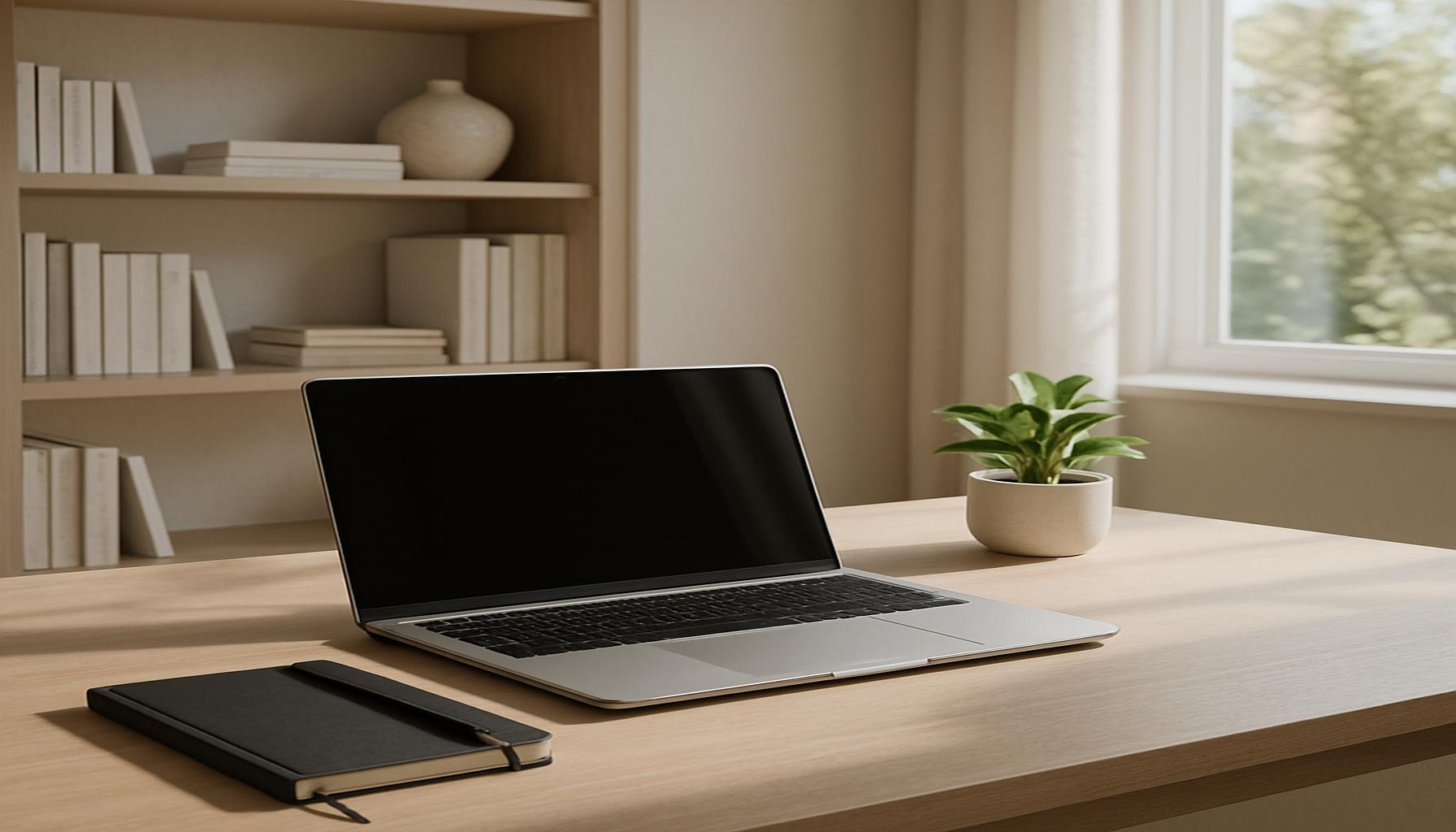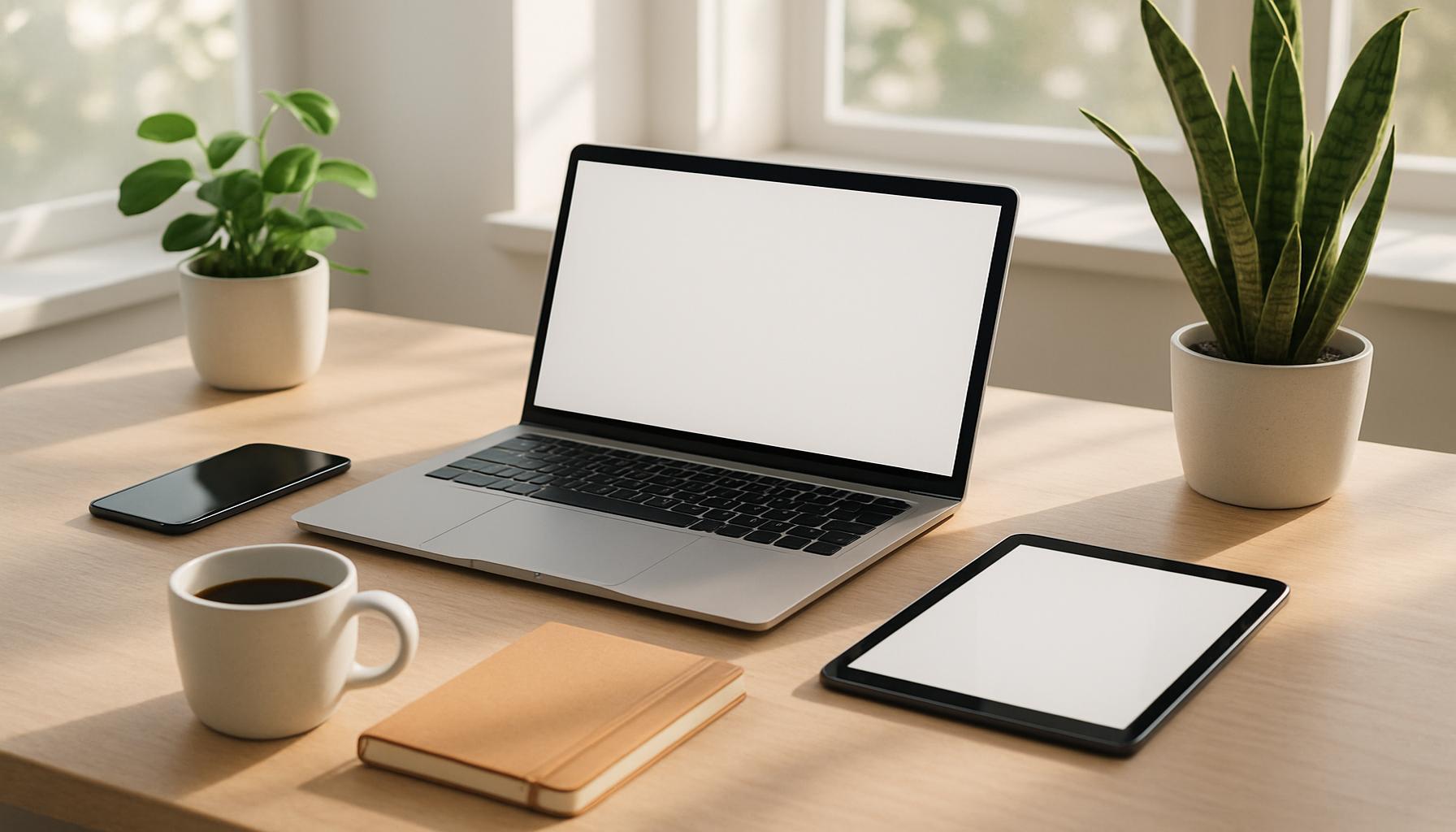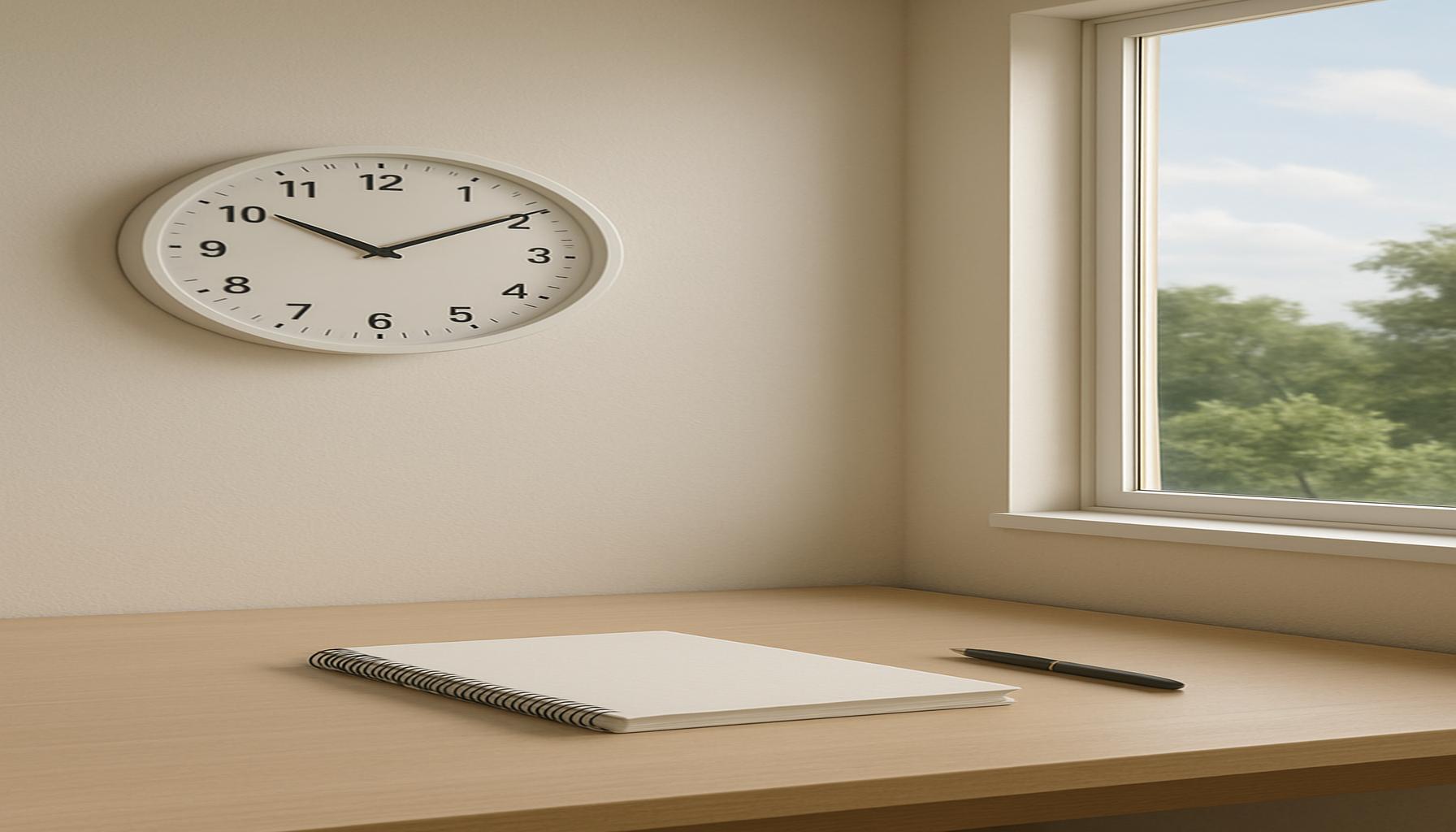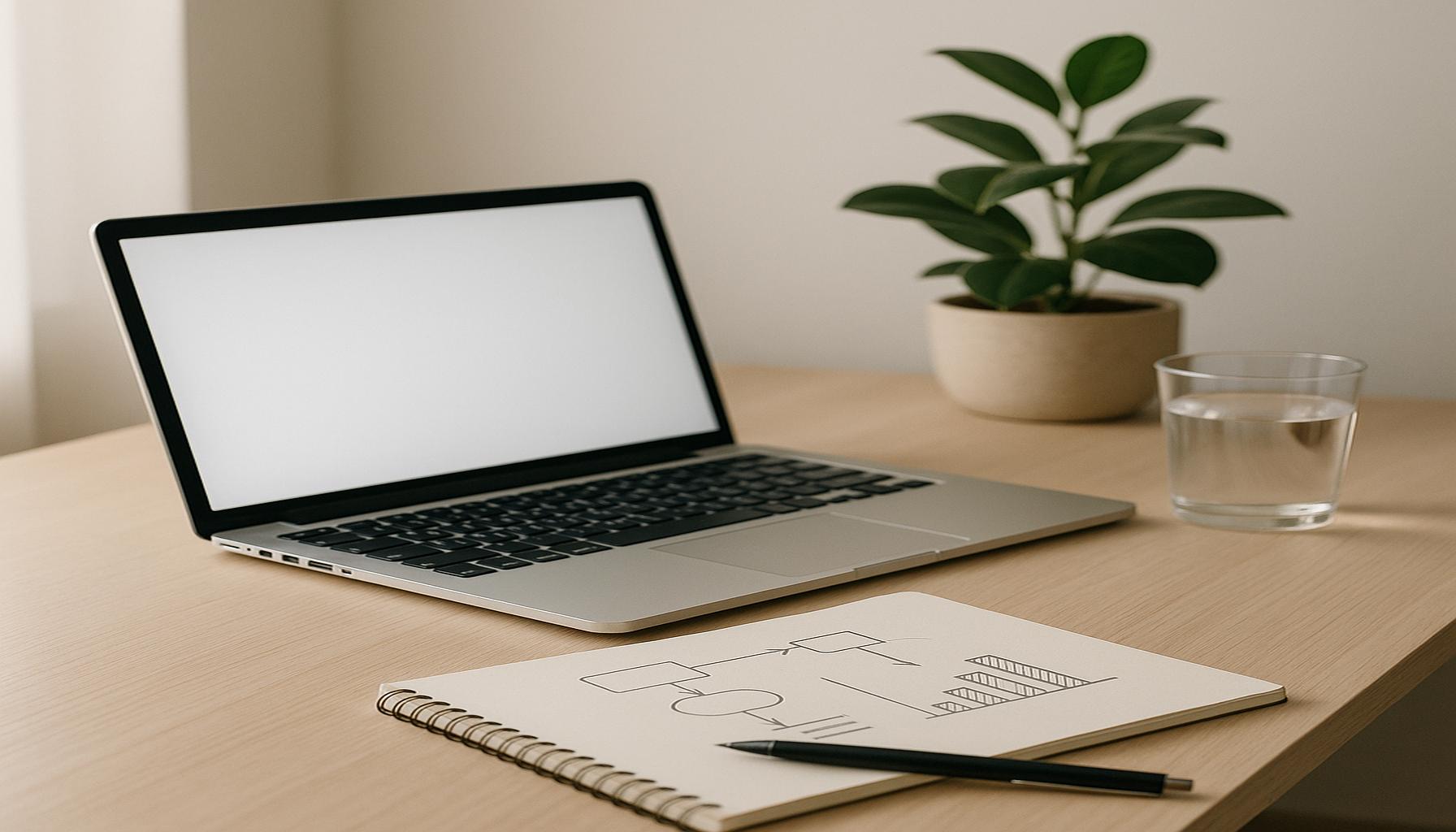Minimalist Organization Strategies to Maximize Work Productivity

Embracing Minimalism for Enhanced Productivity
In the fast-paced world of today, clutter can be detrimental to our efficiency. Minimalist organization strategies provide a fresh perspective to streamline workspaces and focus on what truly matters. By eliminating unnecessary distractions, individuals can unlock their full potential and enhance productivity.
Conventional wisdom disrupts the narrative that more is better, suggesting instead that a cleaner, simpler environment fosters greater creativity and concentration. Here’s how minimalist organization can make a significant difference in your daily routines:
- Clear Workspaces: A tidy environment leads to clearer thinking. Studies suggest that individuals who operate from organized spaces report higher levels of focus and less cognitive overload. For example, a well-arranged office with essential tools easily accessible allows for quick transitions between tasks.
- Digital Decluttering: Streamline your digital tools for better focus. Email inboxes filled to the brim can lead to anxiety and distraction. Implementing systems like the “inbox zero” method—keeping your email inbox empty by archiving or responding to messages—can create a sense of accomplishment and drastically reduce stress.
- Simple Processes: Reduce complexities in workflows to enhance efficiency. For instance, a tech company might utilize Agile methodologies to trim excess steps in project management, leading to faster product development cycles and a more engaged team.
Imagine transforming your workspace into a sanctuary of productivity. Achieving this vision involves deliberate choices that cater to your personal work style. Consider the implications of:
- Reducing Physical Clutter: Fewer items mean less to distract you. A minimalist desk setup typically includes only a computer, a notebook, and perhaps a plant for a touch of nature. This not only elevates the aesthetic of your workspace but also facilitates a more peaceful mind.
- Implementing a Minimalist Desk Setup: Only keep essential items at hand. Instead of a cluttered desktop filled with papers and supplies, curate a collection of items that inspire and motivate you, like a motivational quote or a picture of loved ones.
- Prioritizing Tasks: Use a simplified task list to manage daily responsibilities. Employing tools like the Eisenhower Matrix can help you differentiate between what’s urgent and what’s important, allowing you to focus on high-impact activities.
The key to utilizing minimalist organization strategies effectively lies in customization. Each person’s optimal setup will vary, opening doors to innovative practices that suit personal preferences. For example, while one person may thrive in an ultra-clean workspace, another might prefer a few carefully chosen decorative items that foster inspiration.
As you explore these strategies further, be prepared to adapt and refine your approach to achieve the best workflow possible. In a world teeming with distractions, minimalist organization isn’t merely a trend; it’s a sustainable strategy for those striving to harness greater efficiency and creativity in their work and personal lives. Consider initiating small changes today that could lead to a more organized and fulfilling tomorrow.

DIVE DEEPER: Click here to learn how minimalist organization can transform your space and mindset
Key Minimalist Techniques for an Efficient Workspace
Adopting minimalist organization strategies can significantly boost work productivity by eliminating distractions and promoting a focus-driven atmosphere. The following techniques are foundational in creating an effective minimalistic work environment that encourages efficiency:
- Establishing a Declutter Routine: Regularly review and assess your workspace to keep clutter at bay. Set aside a few minutes each week to remove items that are no longer necessary, whether they are outdated papers or unused tools. This habit prevents build-up and promotes a consistent state of organization.
- Utilizing Vertical Space: Many individuals overlook vertical space, which can be a game changer in organizing an office. Implementing shelves or vertical file organizers can free up desk space while still allowing for easy access to essential items, reducing the sense of clutter.
- Adopting the One-In-One-Out Rule: Whenever you bring a new item into your workspace, commit to removing an existing one. This principle encourages mindful consumption and helps maintain a minimalistic environment. It also prompts you to evaluate the necessity of each item you choose to keep.
These strategies converge into a broader philosophy that minimizes distractions and simplifies the workflow. However, practical application hinges on understanding personal habits and identifying what works best for individual needs.
Creating a Dynamic Digital Environment
In addition to physical organization, managing your digital workspace is crucial for a minimalist approach. Studies indicate that a cluttered digital environment can result in increased stress and decreased productivity. Here are several strategies to enhance your digital organization:
- Folder Simplification: Create a minimal number of well-categorized folders to store digital files. Overloading your computer with excessive folders can lead to confusion and wasted time searching for files. Aim for a streamlined structure that allows for quick retrieval of essential documents.
- Cloud Storage Automation: Utilize cloud storage solutions to automatically back up important files while reducing local storage clutter. Services like Google Drive or Dropbox not only free up space but also create easy access points for collaboration, thus driving efficiency.
- Regular Software Maintenance: Keep your software and applications in check. Regularly update and remove unused applications to prevent digital clutter. A seamless, fast-running digital interface minimizes interruptions, allowing for smoother transitions between tasks.
Incorporating these minimalist strategies into your daily routine can pave the way for increased focus and productivity. By cleaning both your physical and digital spaces, you set the stage for a work environment that champions efficiency. In a world where distractions abound, mastering minimalist organization is not just a luxury but a necessity for achieving optimal productivity.
| Category | Details |
|---|---|
| Time Management | Prioritization techniques that help determine which tasks to tackle first, improving focus on essential projects. |
| Decluttering Workspace | Enhanced concentration and reduced distractions that lead to higher efficiency and work output. |
| Digital Minimalism | Organized digital tools that streamline communication and project management, fostering better collaboration. |
One core element of Minimalist Organization Strategies is effective time management. By applying prioritization techniques, individuals are empowered to identify crucial tasks and allocate time accordingly. This approach not only increases productivity but also promotes a sense of accomplishment, as essential projects receive the attention they deserve.Additionally, decluttering one’s workspace can significantly impact work productivity. A tidy environment encourages better concentration, while limiting distractions leads to improved efficiency. This minimalist approach emphasizes the importance of maintaining a clear workspace to foster a focused mindset.Lastly, embracing digital minimalism is crucial in today’s technologically driven world. Streamlining digital tools not only enhances organization but also improves communication and project management. By decluttering digital files and applications, workers can create a more efficient workflow—ultimately maximizing productivity and providing a better structure for daily tasks. Embracing these strategies can lead to a rewarding professional experience and a more balanced life.
DIVE DEEPER: Click here to uncover the significance of mental clarity in minimalism
Streamlining Workflows with Minimalist Practices
While organizing your physical and digital workspace sets the foundation for productivity, streamlining workflows can take your efficiency to the next level. Implementing minimalist strategies that focus on simplifying processes allows workers to concentrate on what truly matters, driving both creativity and effectiveness. Below are some actionable techniques to consider:
- The Pomodoro Technique: This time-management method encourages focused work intervals followed by short breaks. By breaking your work into manageable chunks, you can maintain high levels of concentration without feeling overwhelmed. For instance, working for 25 minutes, followed by a 5-minute break, can enhance your ability to concentrate, especially in a minimalist workspace free of distractions.
- Simplified Task Lists: Instead of overwhelming yourself with endless to-do lists, focus on a maximum of three priority tasks each day. Adopt strategies such as the Einstein Method, which emphasizes prioritization based on urgency and importance. This minimalist approach to task management keeps you focused on the essentials, leading to a more productive workday.
- Automated Repetitive Processes: Identify any tasks that recur frequently and consider automation tools, such as IFTTT or Zapier, to eliminate redundancy. This allows you to devote your energy to more critical tasks. For example, setting up automatic responses to common email queries can free up time that can be better spent on complex projects.
Embracing Minimalist Mindset Shifts
Beyond the physical and digital implications, adopting a minimalist mindset can profoundly influence productivity. Reducing mental clutter is just as vital as decluttering your workspace. Here are some mindset shifts to consider:
- Emphasizing Quality Over Quantity: Shift your focus from completing numerous tasks to producing high-quality work. This involves learning to say ‘no’ to non-essential obligations that may clutter your schedule. For instance, prioritizing deep work sessions instead of engaging in shallow tasks can lead to a significant increase in overall productivity.
- Mindfulness Practices: Incorporate mindfulness techniques such as meditation or deep-breathing exercises into your daily routine. These practices help clear your mind, allowing you to approach tasks with fresh energy and a clearer perspective. A study published in the Journal of Occupational Health Psychology found that employees who practiced mindfulness reported better focus and less stress, underscoring the productivity benefits of mental clarity.
- Continuous Reflection: Foster a habit of reflecting on your work processes regularly. This includes looking for ways to eliminate hurdles and inefficiencies in your workflow. By reflecting weekly on what has worked and what hasn’t, you can make incremental adjustments that align with your minimalistic approach to work.
These techniques create a conducive environment for heightened focus and productivity. By applying minimalist principles not just to your workspace but also to your workflows and mindset, you pave the way for a transformation that resonates on both personal and professional levels. Embracing minimalism in all its forms encourages concentration and fosters an atmosphere where productivity flourishes despite the distractions of modern work life.
DIVE DEEPER: Click here to simplify your life
Conclusion: The Transformative Power of Minimalism in Productivity
In today’s fast-paced work environment, the challenge of maintaining productivity can often seem daunting. However, adopting minimalist organization strategies is a powerful approach that allows individuals to prioritize efficiency and clarity. By decluttering both physical and digital spaces, professionals can create a harmonious workspace that encourages focus and reduces distractions. For instance, a clean desktop—free of unnecessary papers and digital files—can substantially reduce the time spent searching for important documents, allowing for a smoother workflow.
Strategies such as the Pomodoro Technique, which breaks work into intervals typically ranging from 25 minutes of focused activity followed by short breaks, can enhance concentration and productivity. Simplified task lists, prioritized by urgency and importance, help individuals not only stay organized but also focus on key deliverables. Automation tools, like email filters and project management software, serve to streamline daily tasks, enabling workers to dedicate their energy toward high-quality output.
Moreover, cultivating a minimalist mindset amplifies these benefits. Emphasizing quality over quantity—whether in the projects one takes on or the information consumed—can lead to significant improvements in both productivity and overall mental well-being. Engaging in mindfulness practices, such as meditation or breathing exercises, helps clear mental clutter, thereby enhancing focus and creativity. Continuous reflection on one’s workflow can identify areas where even the simplest additions, like digital decluttering apps, can have substantial impacts.
As companies and individuals embrace minimalism, they create environments where creativity flourishes and efficiency is second nature. For example, many tech firms in Silicon Valley are redesigning their offices to embody minimalism, favoring open spaces and fewer distractions, which historically leads to greater innovation and collaboration.
Ultimately, by integrating these minimalist practices into daily routines, one can substantially improve productivity and work satisfaction. In a world that often glorifies busyness, it is essential to remember that less can indeed be more. Challenge yourself to explore these minimalist organization strategies—from purging non-essential items to adopting technology that aids in simplification. This exploration can lead you to a refreshing path of achieving your professional goals with reduced stress and heightened purpose, ultimately transforming your engagement with work and life.


